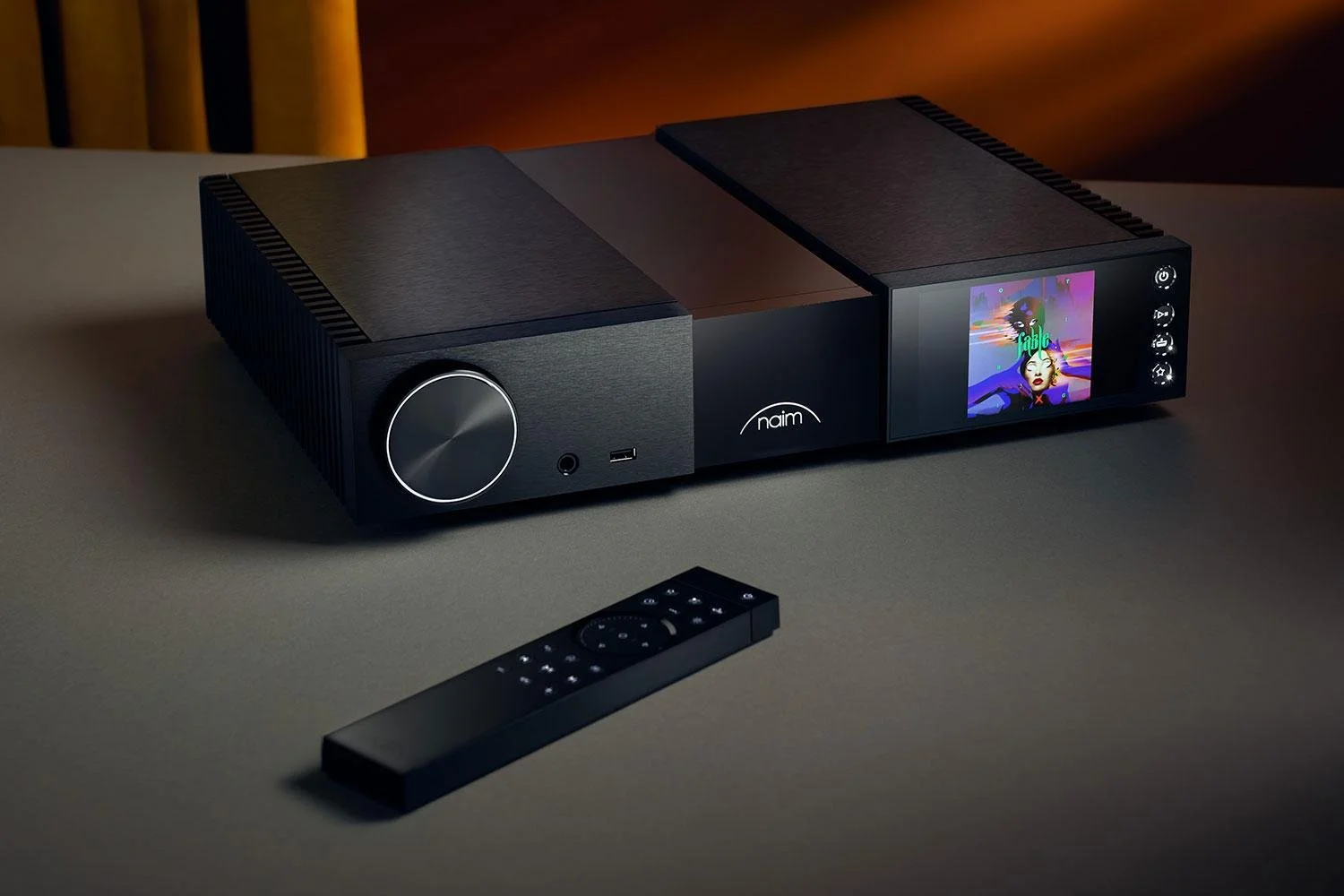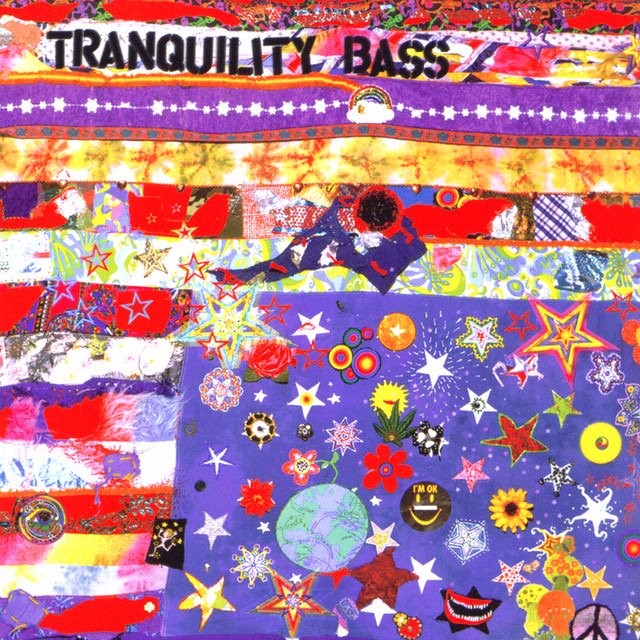Naim Audio NSC 222 Streaming Preamplifier
Time was, Naim Audio was the leader in British export HiFi gear. The crème de la crème. With prices to match. Components and speakers of superior design and manufacturing quality from the company founded by racer and entrepreneur Julian Vereker 50 years ago. Sadly, Vereker died of cancer in 2000.
Naim has many competitors now from the pearly shores of the UK. In 2011, the company merged with French speaker giant Focal with the proviso that both companies run independently. Focal’s cash injection has helped project Naim to the front and centre of quality HiFi manufacturers, all elbowing for valuable, elusive market share.
A good thing is Naim has never forgotten its founder's values and design philosophy. Superior quality, minimalist design and power supplies, power supplies, power supplies. Their famous original 200 series was first designed by Vereker and updated umpteen times, now replaced by the “New Classic Range”, including the NSC 222 preamplifier and streamer, the NAP 250 power amplifier, as well as the NPX 300 power supply. I’m reviewing the NSC 222 Streaming Preamplifier ($8999).
My Use
I usually see Naim products paired with other Naim components for reviews and auditions. This was their preference since Naim’s infancy. As Wikipedia quotes: “Naim warns against using other makes of pre-amplifiers with Naim power amplifiers, arguing that the former defines the operating parameters of the latter and guarantees its stability.”
I used the matching NAP 250 power amplifier, the same price as the 222. I did not have on hand the matching NPX 300. I’m told it elevates the performance of both 222 and 250 significantly. Just the way Vereker liked it.
Julian Vereker MBE (1945-2000). Photo: Naim.
Cabling was by Audioquest, room treatment by Vicoustic, with Paradigm Persona 3F Loudspeakers sharing duties with Paradigm Founder 40B Bookshelf Loudspeakers (review forthcoming).
I’d like to thank my friend Austin (Audiophilia’s new “Advisory Council”) for arranging the 222 for review. Austin is a Naim Whisperer if there ever was one. He was a great resource for this review.
Features & Specifications
The 222 is not quite an All-In-One, only missing the amplification component (and no room correction software). Add an amp and speakers and you’re set. For vinyl folks, an MM phono stage is included. To quote Naim, NSC 222 is an easy-to-use streaming preamplifier with multiple functions, offering uncompromising sound quality. With its high-precision engineering and exclusive British design from Naim, this product brings you a world of streamed music and radio, handling vinyl and audio headphones, as well as creating a high-performance analog preamplifier. Combine it with the NAP 250 power amplifier for an exceptional assembly: just add loudspeakers. I did not use the headphone function.
It’s Roon Ready, but I used Qobuz (HiRes) via the “FOCAL & naim” app (iOS). It worked seamlessly with the 222 and navigated and controlled volume. I was playing music within a minute of the app download.
With its meat and potatoes functionality, the 222 can access a large number of streaming services (Spotify, TIDAL, Qobuz, etc.), including a wide variety of online radio stations, all handling bitrates of up to 32bit/284kHz.
To add to its Jack of all trades digital wizardry, Naim gives you Spotify Connect, Apple Music, TIDAL Connect, AirPlay 2, Chromecast, UPnP™ servers, USB key, and more.
Continuing Vereker’s very specific design topology, “Under the guidance of our Technical Director, Naim’s engineers have developed simple but elegant circuits, combined with our acclaimed and high-performing DR [Discrete Regulator] technology, guaranteeing the stable and fluid power supply so essential for superior performance. Our teams opt for the highest-quality components and perform ultra-precise measurements for an uncompromising result.”
I’ve been a big fan of Naim’s sound design for years and their dynamic, rich, detailed, effortless type of sound continues in the 222 ($8999). As for the legendary build quality, a quick story. Back in 1997, one of the first reviews we published in Audiophilia was the Naim 3.5 CD Player. It had a small magnetic puck that stabilized the rotation of the CD. One day, no puck. We shook the case. The little devil was inside. We took off the top panel and inside was the most organized, neat layout with perfect cable wrapping and placement. Superb.
A TFT screen is a TFT screen, right? I’m not sure why, but I’ve never seen screens' clarity and vibrant colour the way Naim does them.
Audio Inputs: USB/ 2 x USB Type A socket (front and rear - 1.6A charge)
Digital (S/PDIF): 2 x Optical TOSLINK (up to 24bit/96kHz); 1 x coaxial RCA (up to 24bit/192kHz, DoP 64Fs); 1 x coaxial BNC (up to 24bit 192kHz, DoP 64Fs)
Audio Input: 1 x moving magnet phono; 1 x 8-pin DIN (compatible with 5-pin DIN cables); 1 x RCA stereo pair
Line level inputs (RCA/DIN): Impedance 47k, 2.2V typical, 7.5Vrms Max; 8 pin DIN has +/-18V for compatible external phono stages such as Solstice NVC TT; Compatible with 5 pin DIN
MM phono: 47k/470pF, 5mV, 23dB overload (75mV max)
Audio Outputs
Analogue: 1 x XLR pair (Stereo XLR balanced impedance 7Vrms max); 1 x RCA pair (Stereo RCA 7Vrms max); 1 x 6.35mm headphone jack (Headphone 1.5W into 16)
Analogue: Pre-amplifier at max volume 15.5dB; Phono stage MM 40dB
Frequency Response: MM: -3dB at 10Hz, RIAA +/-0.1dB; Line: 3Hz to 40kHz -3dB; Digital: 3Hz to 27kHz -3dB
Connectivity: Ethernet (10/100Mbps), Wi-Fi (802.11 b/g/n/ac)
Audio Formats
WAV - up to 32bit/384kHz
FLAC and AIFF - up to 24bit/384Hz
ALAC (Apple Lossless) - up to 24bit/384Hz
MP3 - up to 48kHz, 320kbit (16 bit)
AAC - up to 48kHz, 320kbit (16 bit)
OGG and WMA - up to 48kHz (16 bit)
DSD - 64 and 128Fs
M4A - up to 48kHz, 320kbit (16 bit)
Gapless playback supported on all formats
Weight: 24.25lbs (11kg)
Dimensions (HxWxD) 35/8x17x121/2" (9.15x43.2x31.75cm)
Sound
In keeping with the high-end pricing/performance ratio, and recognizing $8999 is very expensive, you are getting a lot for your investment—analogue preamplifier, volume control, DAC, streamer, MM phono and headphone amplifier. The preamp is an analogue beauty to match the 222’s exquisite aesthetic and the DAC is a PCM1791a with custom polystyrene ultra-low dielectric absorption. Of course that is only part of the picture. This is combined with Naim’s proprietary DSP 705.6 kHz / 768 kHz integer oversampling filter. Then the 44.1/48kHz-based sample rate master clocks for low jitter. For the SPDIF inputs, Naim adds a DSP RAM buffer to eliminate the jitter caused by SPDIF modulation. As my buddy likes to say, “Chipsets are cheap. It’s what you surround that chipset with that matters. How you power those chipsets matter. What you feed the chipsets matter (Naim’s NP800 streaming card LVDS balanced digital signals for low noise).”
The seamless analogue integration and digital implementation give the 222 its refined, detailed sound.
The 222 fleshes out vocals and places them exactly where the engineer specified. The same for orchestral instruments. A big tell in streaming quality is timbral accuracy. Many times, lots of “accuracy” but not enough “timbre”. Processed sound. Impressive, yes, but it can lack an emotional wallop. The Naim NSC 222 replicates the performer's recorded ambiance and emotional intent. So guitars on Tea for the Tillerman were beautifully resolved along with the myriad of inflections Cat Stevens provides in “Where Do The Children Play?”. Mark Knopfler on his 2009 studio release Get Lucky did not fare quite as well as Stevens. The Naim will give you a microcosm of what’s happening on recordings, so Knopfler’s voice sounded a little etched on the leading transient and fade. Still, a marvellous rendition, but the Naim’s a truth machine.
Listening to Qobuz HiRes, Beethoven and Mozart was very revealing of the 222’s merits. Both DG recordings—Mozart’s gorgeous and dark Piano Concerto No. 20 K 466 rang out beautifully with a fulsome piano tone from master pianist Seong-Jin Cho. Wonderful drama with the opening violin syncopations sounding beautiful but ominous. The 222 seems to capture the timbres it’s faced with without fuss. So when the flute, oboe and bassoon add their musical lines to the strings and piano, each instrument is very lifelike in the soundstage. The 222’s technique scrutinized the accompanying Chamber Orchestra of Europe’s not-always-perfect ensemble (I’ve also been critical of their other Mozart DG recordings, primarily the operas under conductor Yannick Nézet-Séguin). The other DG, Karl Bohm’s Beethoven 7, was uninspiring, not in the performance, but in sound. Streaming this famous performance in standard Red Book was dry and thin with none of the glorious Vienna strings you hear on the original vinyl. As with all great playback gear, the recording quality is going to give you the complete picture. Let’s face it, streaming is sometimes a crapshoot.
Later, when listening to Sibelius’ Symphony No. 2, the Naim offered real weight and resonance at the opening with Karajan and the Philharmonia.
Coltrane’s Lush Life was spectacular with his “sheets of sound'“ heard to wonderful effect from Rudy Van Gelder’s typical left-right recording technique. The Naim played Coltrane’s tenor with all his famous timbre and energy intact.
As a preamp, the 222 performed all the functions you require and is streets ahead of what passes for digital volume controls on streamers. Along with a pretty good MM phono stage, the 222 controls your system in a typically Naim, comprehensive way. The unit also comes with a Zigbee smart remote control. It demonstrates a manufacturer can produce a high-design remote made of quality plastics. Interestingly, the volume level in most phono preamps is lower than the output of streaming and line-level sources. It usually means having to turn up the volume on vinyl playback significantly to achieve the same volume levels as a CD, for example. It seems pretty close to the same on the NSC 222. I would rate the MM phono as serviceable. In a mini shootout, the 222’s streamer section all but killed the $7000 cheaper Dual CS 618Q Manual HiFi Turntable—the onboard phono was effective but the much cheaper Dual vinyl playback (EMI OG UK pressing Shankar Concerto for Sitar and Orchestra) was a mere shadow of the same work Naim- streamed. This speaks far more for the superiority of the 222 streamer than any implications about its MM phono. I reviewed the Dual, and while a solid bargain, it certainly had its issues with classical recordings.
As streaming and streamers are so prevalent these days, I have a lot to compare it with. In the looks department, the NSC 222 wins hands down against all comers. Long after the review, I’d find myself daydreaming about it. Did I mention the TFT screen?! The backlit volume knob, the black aluminum, etc, are all gorgeous.
As for sound, streaming only gets us so far to the absolute sound. If it can replicate the very best CD players, we’re cooking with gas! Great designers have told me they are trying to replicate the best CD sound (forget numbers, we’re talking CD player implementation) knowing matching vinyl is years ahead (if ever).
My streaming (and CD) test track to end all tracks, “Dead Already” from Thomas Newman’s score to American Beauty, had life and super energy on the Personas, less so on the smaller Founder bookshelves. I was somewhat surprised considering comparison to my several super high-end frames of reference, the 222 had more air around all the whizzing and buzzing instruments; very impressive and immersive. Also, the bass from the recording via the 222 was monstrous and incredibly deep. Same on two of my favourite “electronic” albums (I’m so late to the party!), Boards of Canada Music Has The Right To Children (Trip Hop and mesmerically beautiful) and the raucous, fun debut album from Tranquility Bass, Let The Freak Flag Fly.
So, comparisons.
My reference Aavik/Ansuz setup is €40,000 accounting for the streamer, DAC, Network Switch and Ethernet cables x3 (cable review forthcoming). It’s a superior sound and only the mid-tier of Audio Group Denmark’s (AGD) exceptional components. But 40K v 9K is not fair.
The Lumin U2 Mini Network Player ships without an onboard DAC, but at a reasonable $2400. It is very fine—a diminutive streaming powerhouse. The soundstage depth on the U2 should be experienced for those wanting to reach out and touch two-channel streaming.
The two Innuos products I’ve reviewed, the Zenith Mk3 Music Server ($4249) and the Statement Music Server ($13,750) are also not cheap. They provided fine sound and had good features, but the older Zenith Mk3 is bettered by the current Lumin and the Statement, by both the Naim and the much more expensive Aavik/Ansuz combination.
Best, hear everything you can, set your budget and go from there. The AGD 280 streaming gear is aspirational and has superior, CD-quality sound. If money is no object and streaming’s your guy, head to the AGD website. The Naim and Lumin approach it but do not surpass it. They wouldn’t at these prices.
But aesthetically and for ease of use, the Naim NSC 222 would be my go-to. It’s 1/3rd the price of the Aavik boxes and Ansuz PowerSwitch D2 and approaches their sound. The Lumin comes in a respectable third, and at $2400, is a superior streaming solution.
Summary
I’m not a fan of streaming but I loved this streamer. Let me explain. Streaming is essential to a reviewer; instead of requesting and waiting for CDs, etc, we have a massive buffet of everything we’d ever need for review. As such, it’s a fantastic tool. And if I want that tool to sound at its very best, approaching, and at times matching, my wonderful Red Book CD player, I would save up $8999 and grab a Naim NSC 222. It’s a gorgeous piece of kit and exemplifies the very best of what Julian Vereker expected from his components. As I get to play with the Aavik and Ansuz combo, among the world’s best streaming setups, I’m good, but if you want to spend less and streaming is your primary listening format, you cannot do better than the fabulous Naim. Very highly recommended.
Further information: Naim Audio















